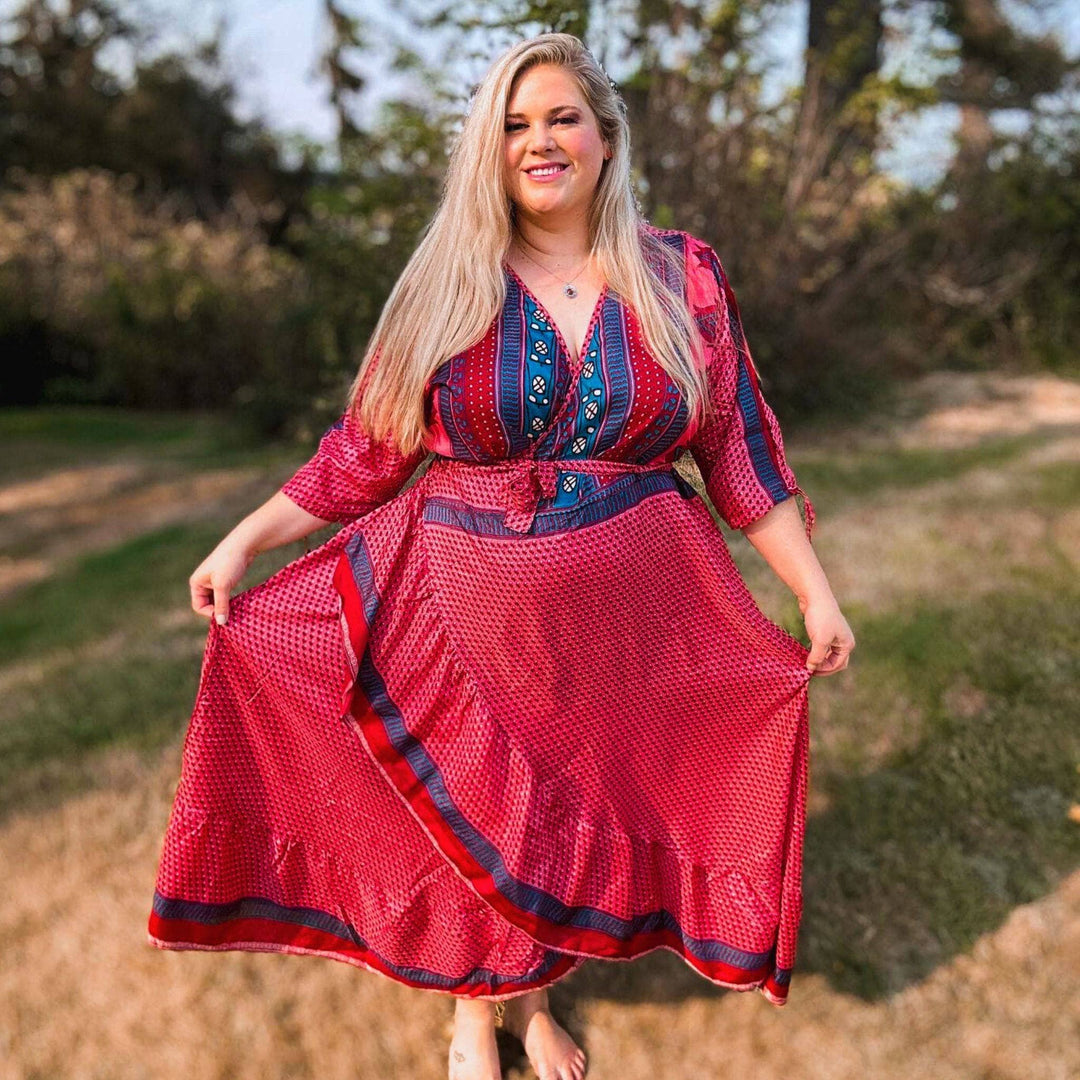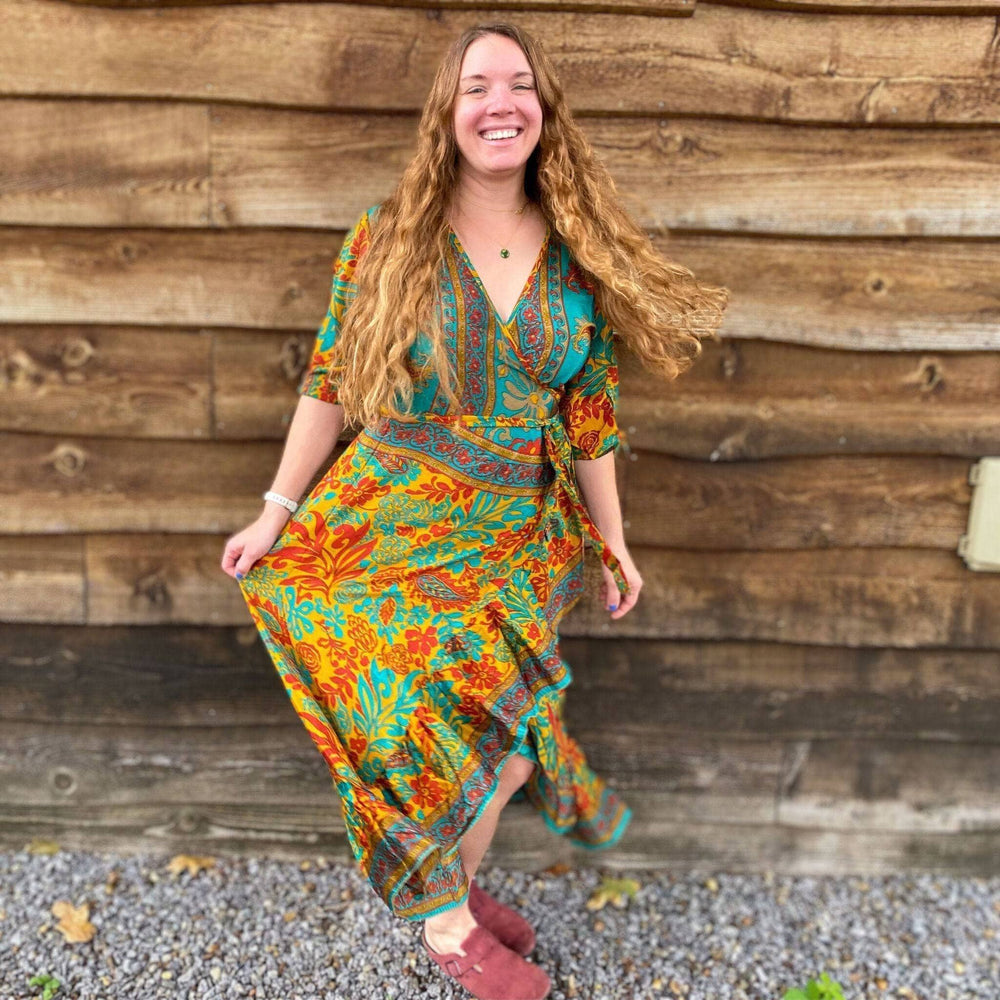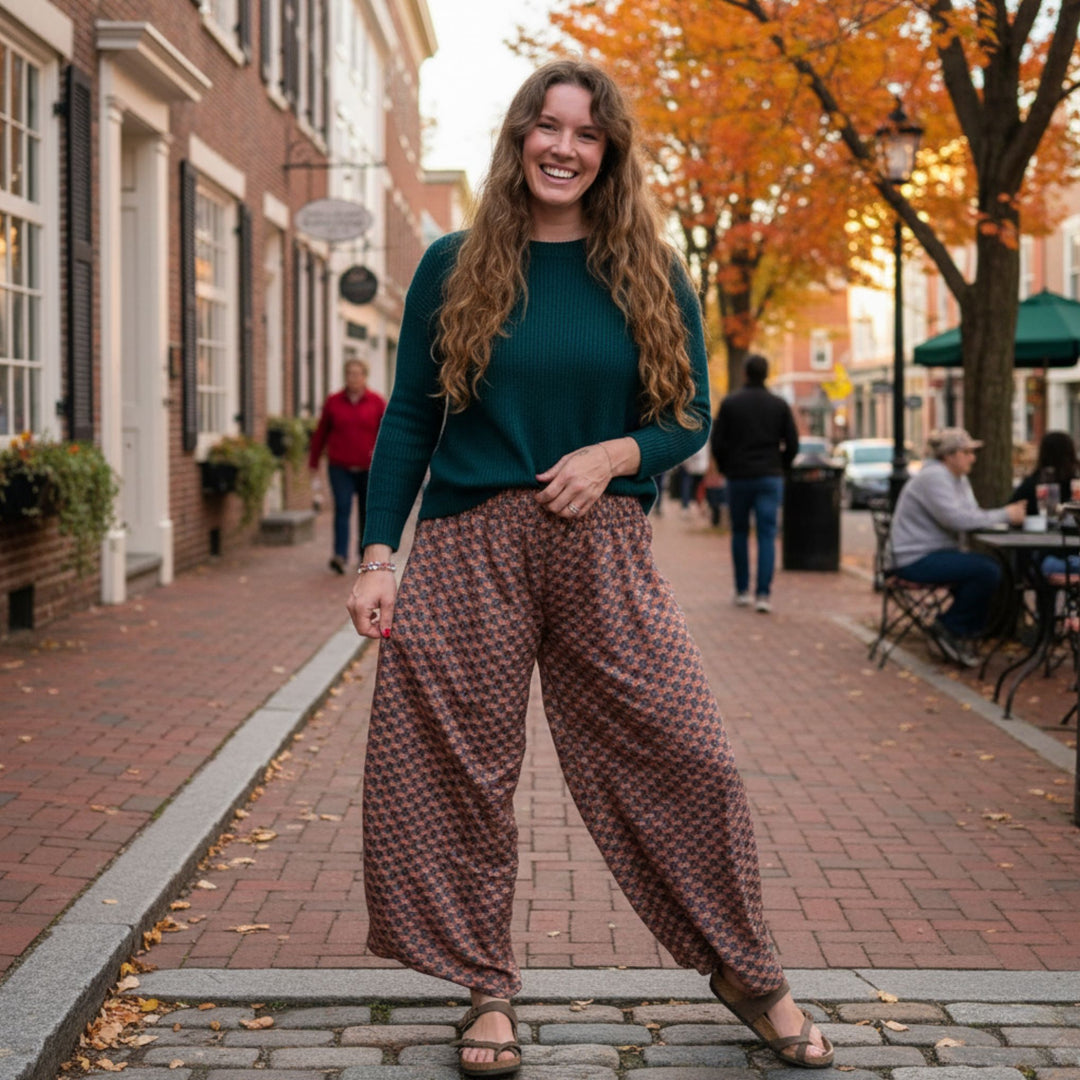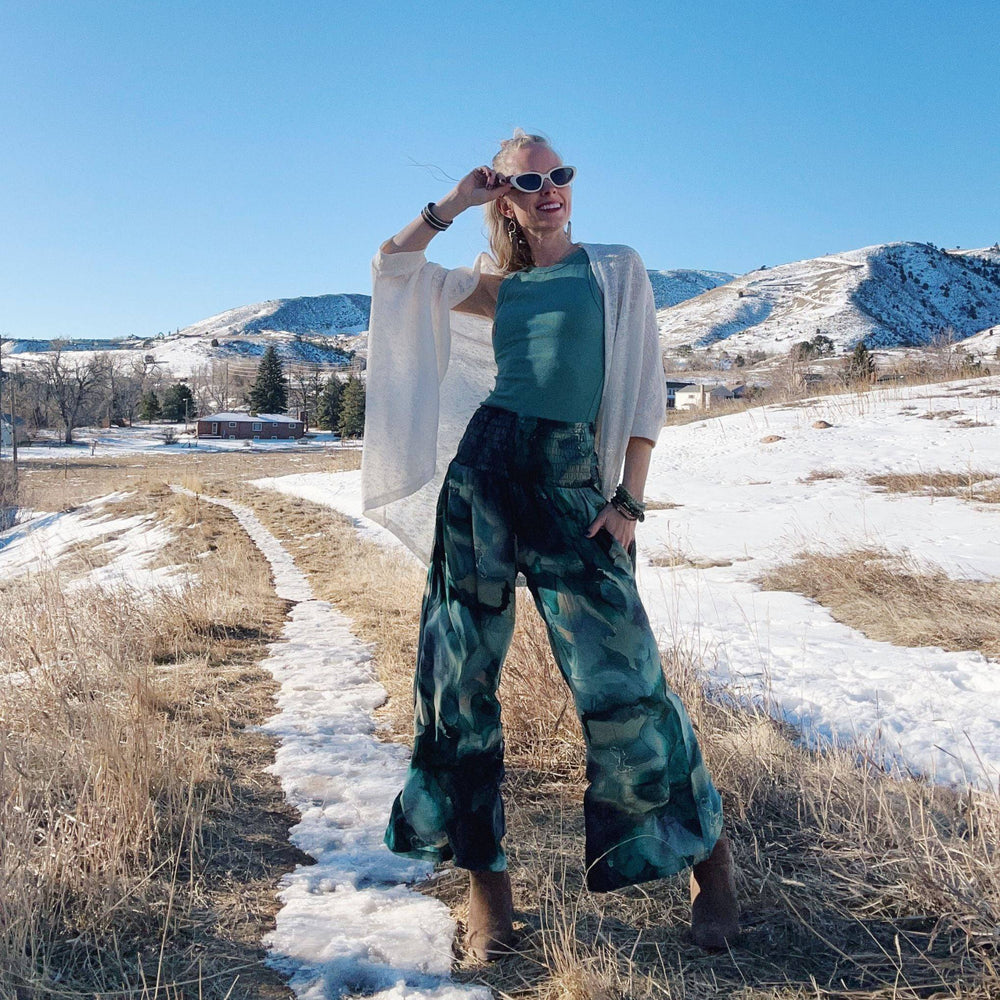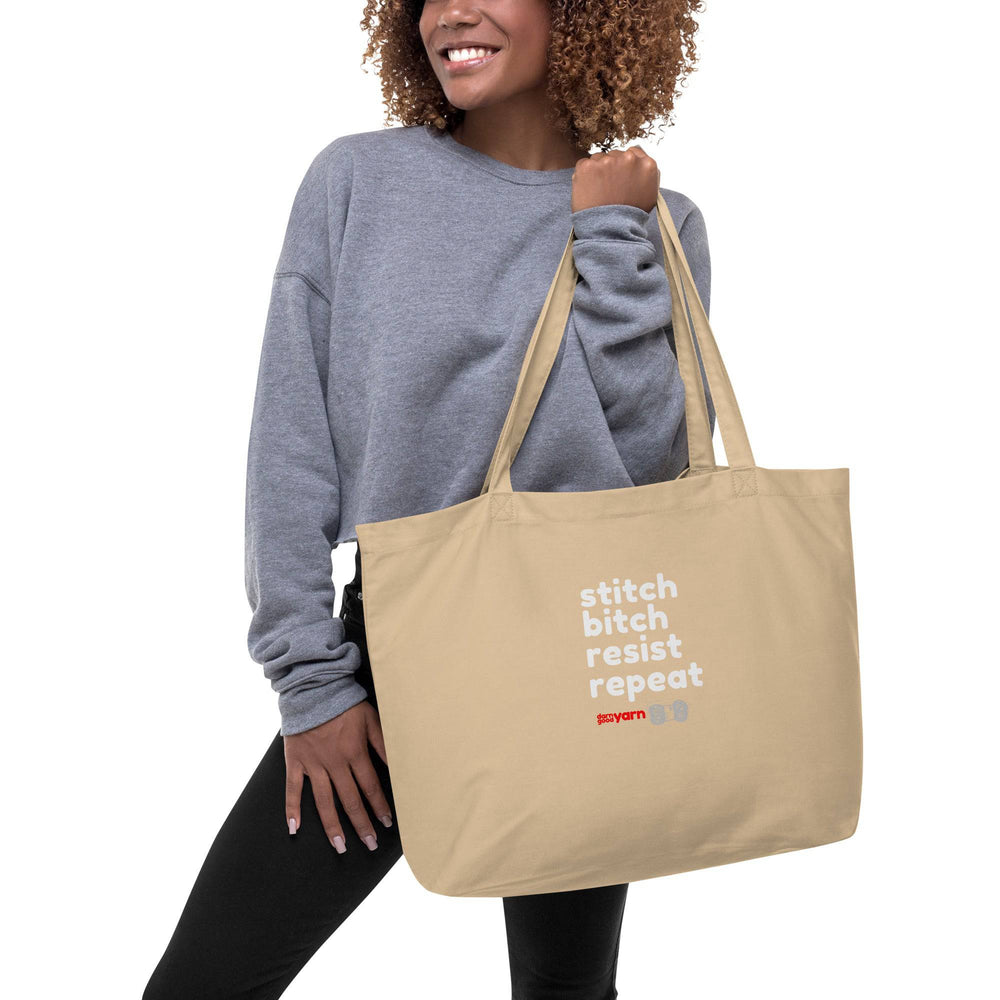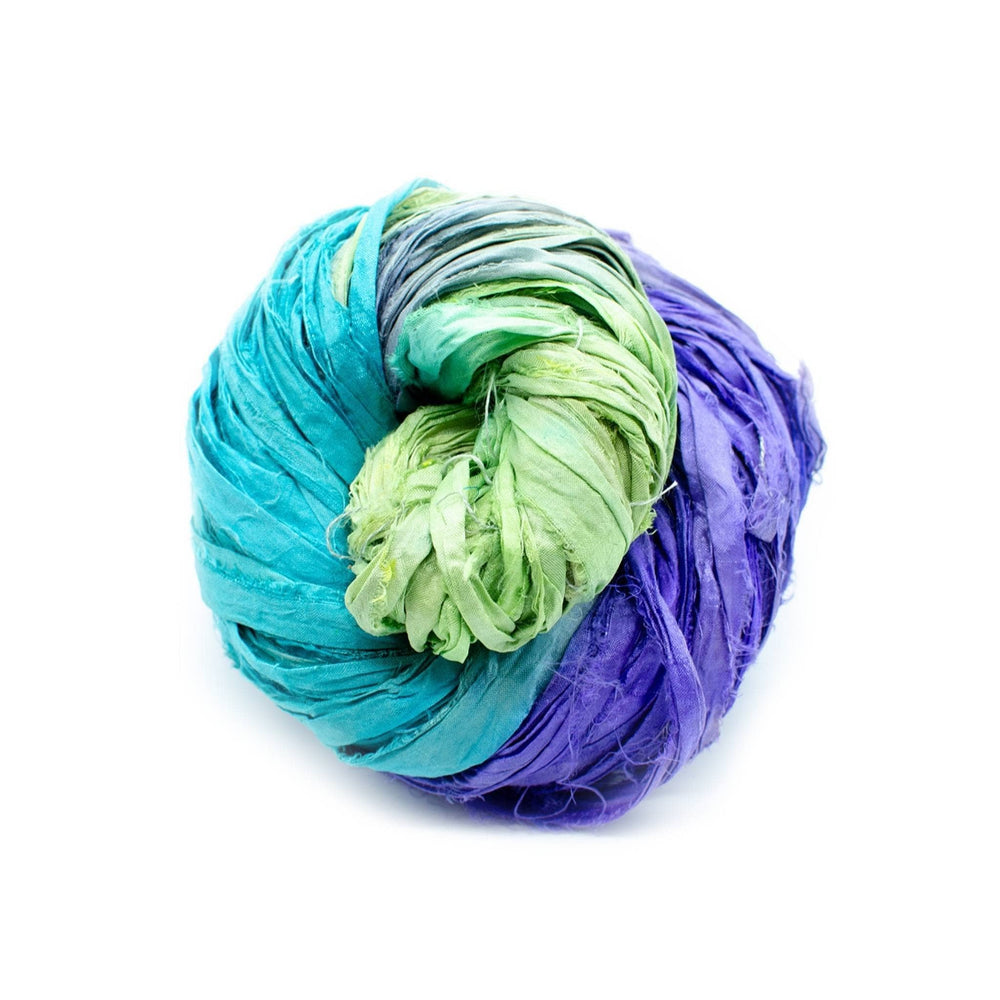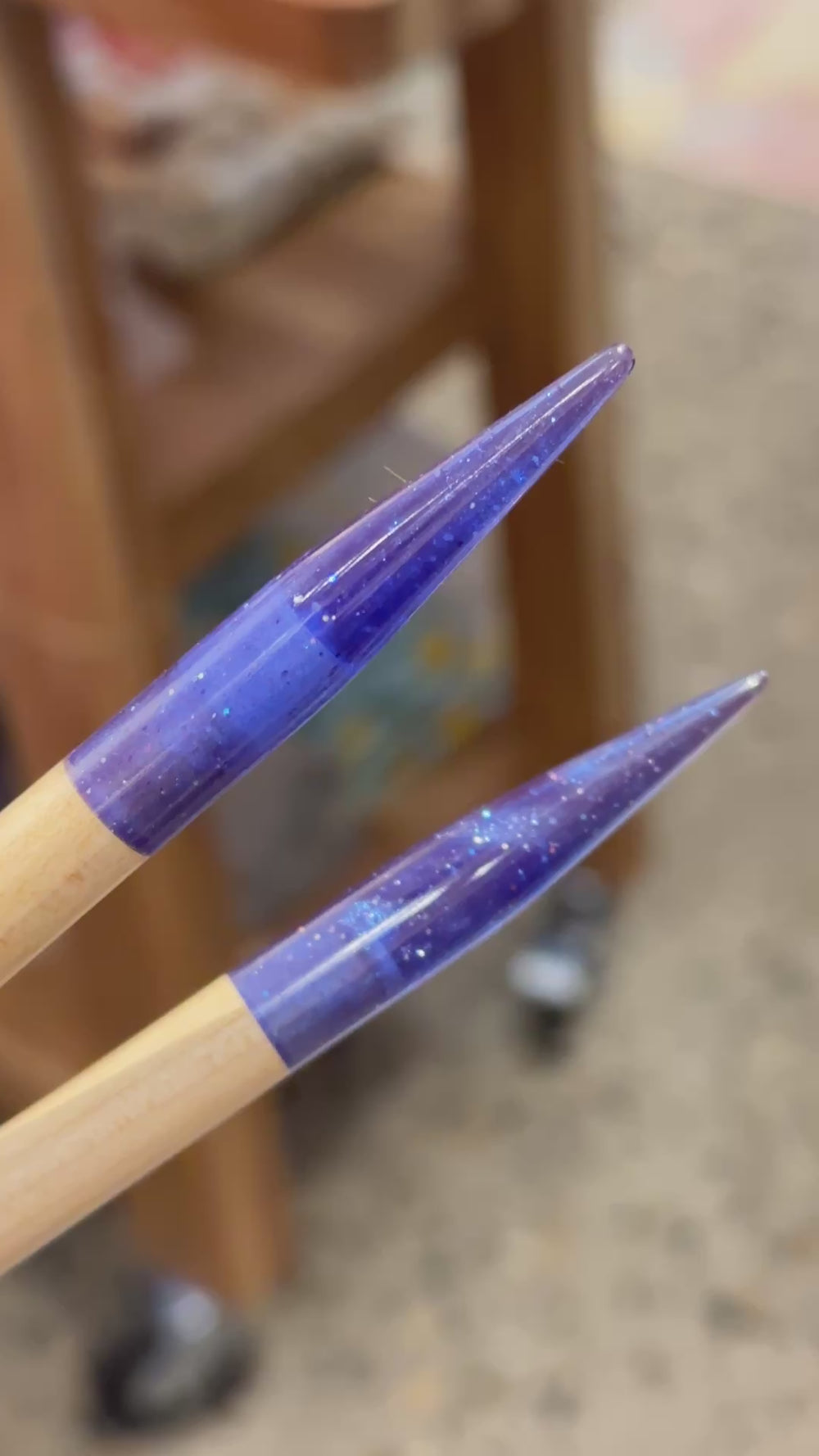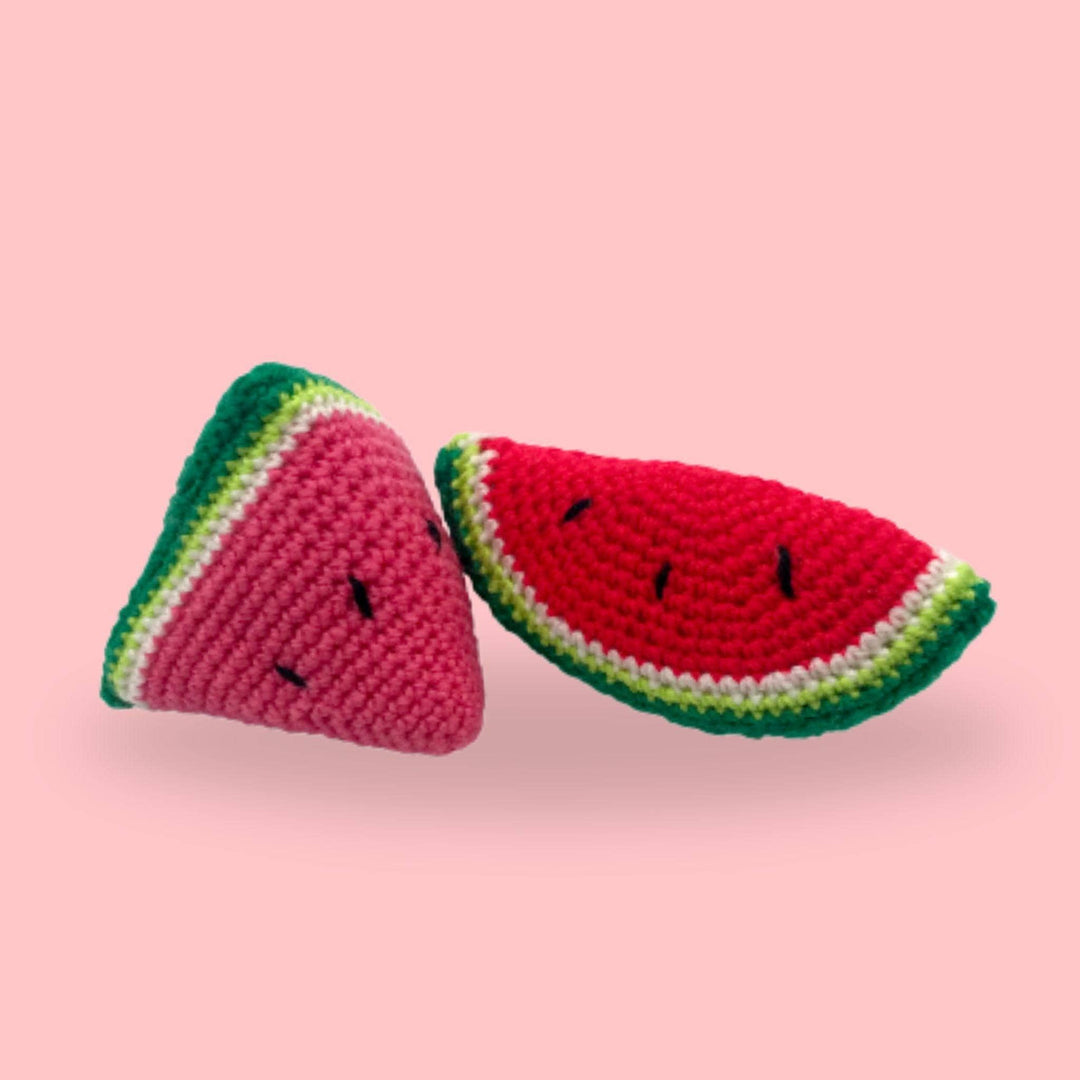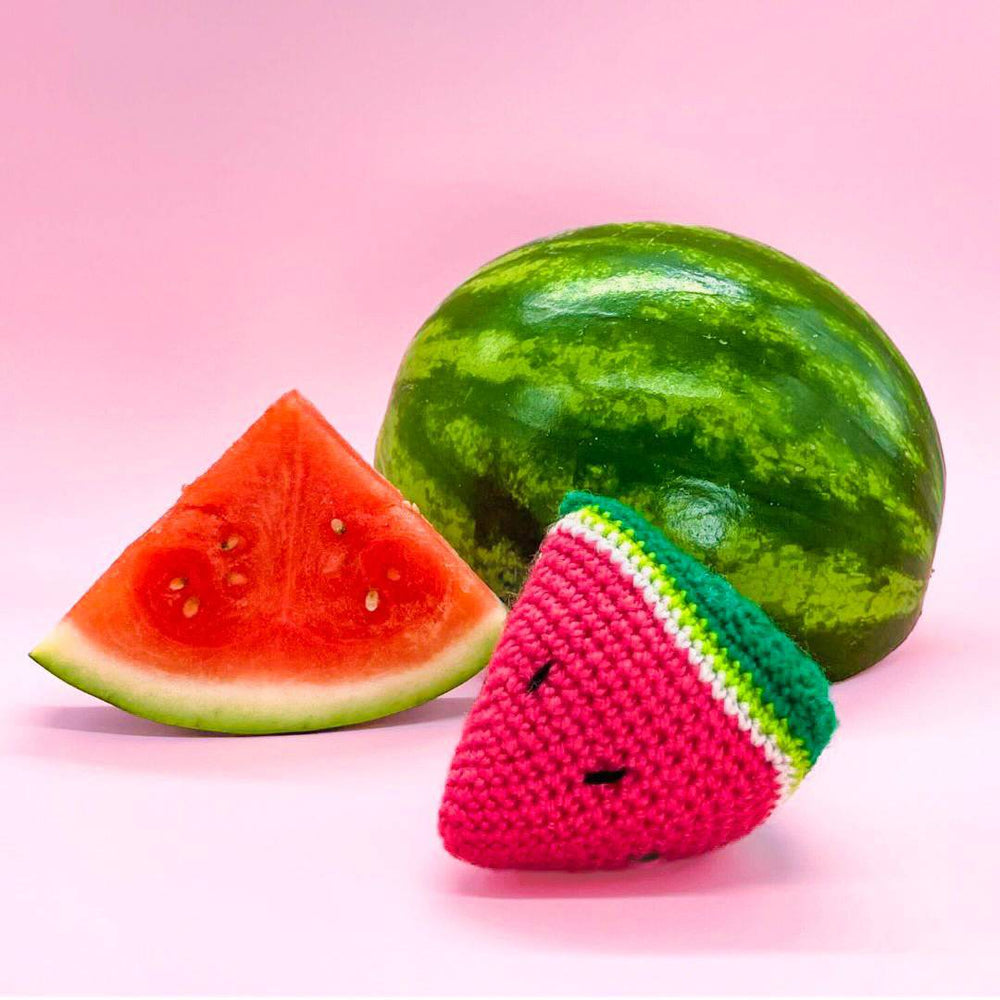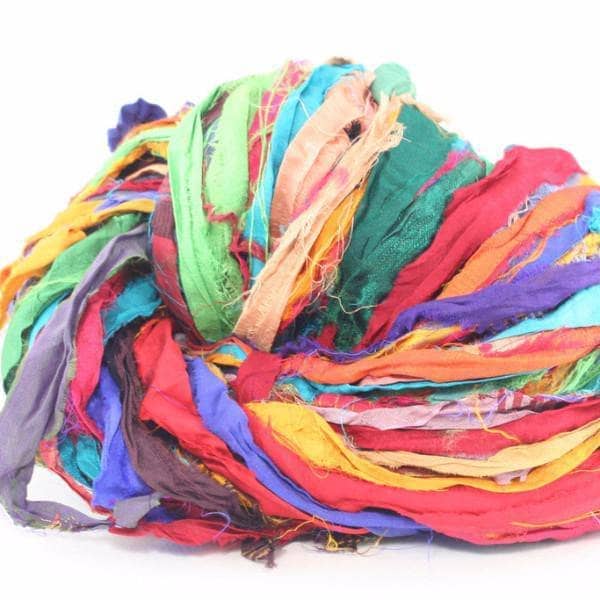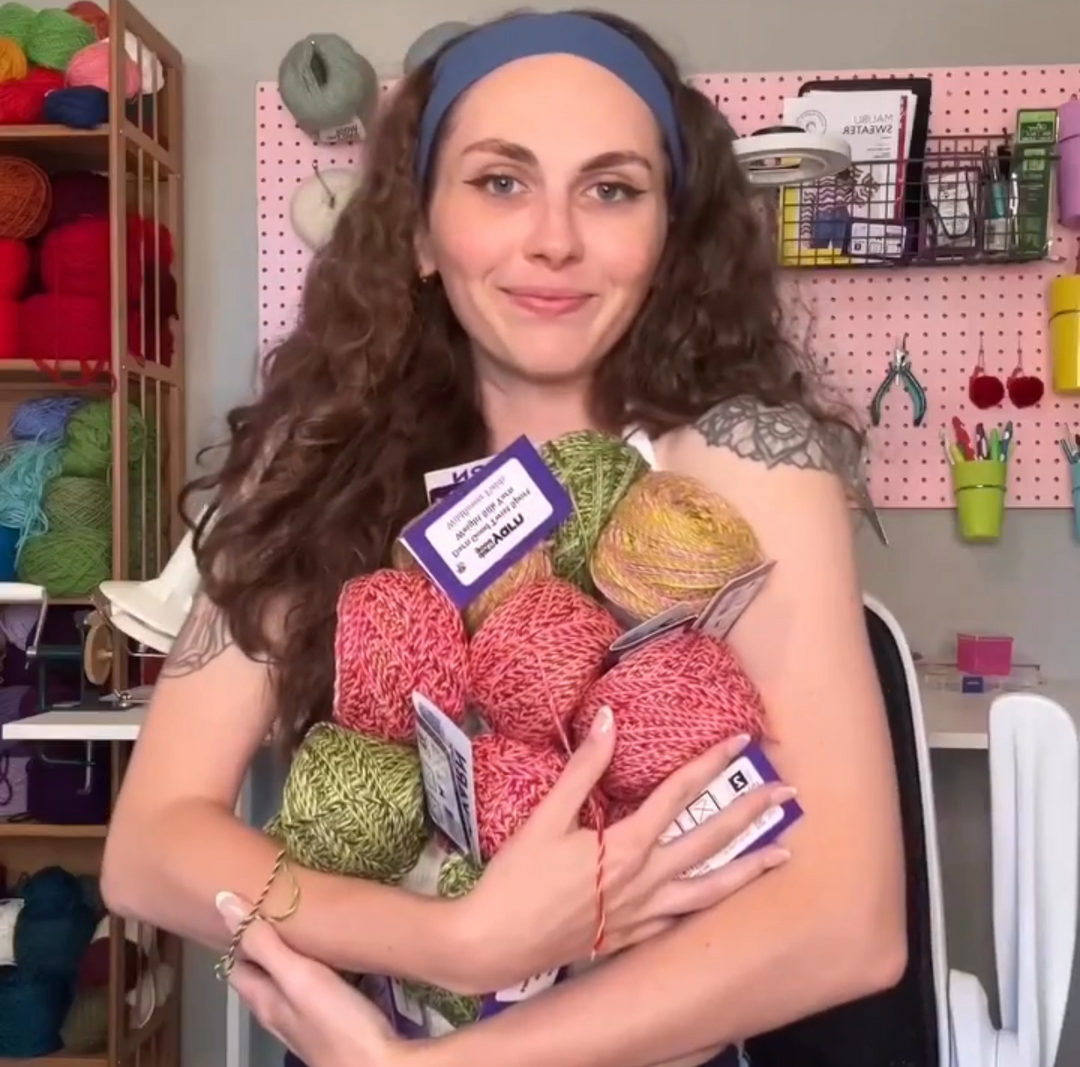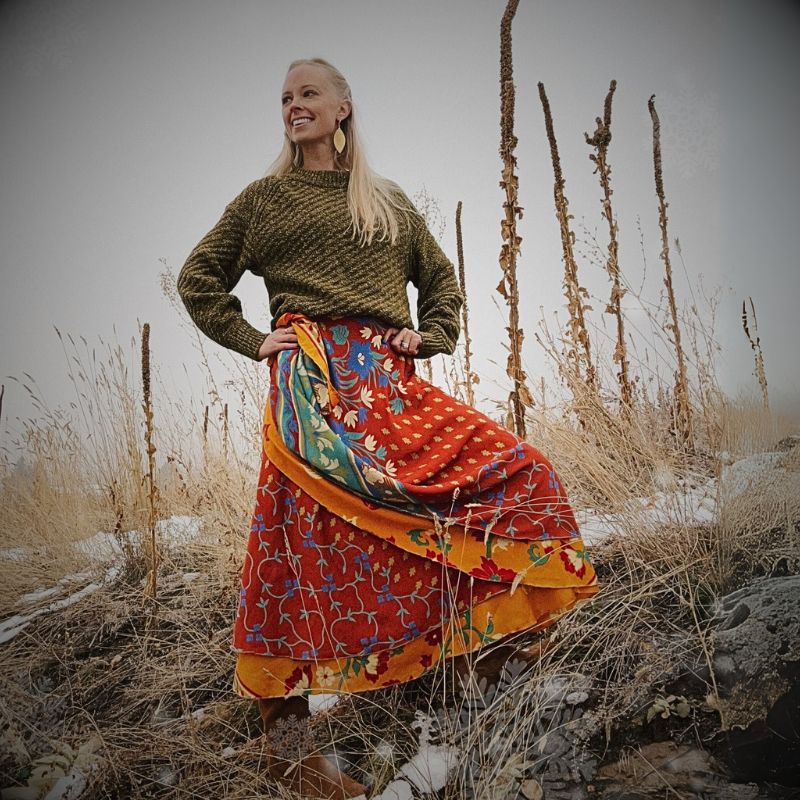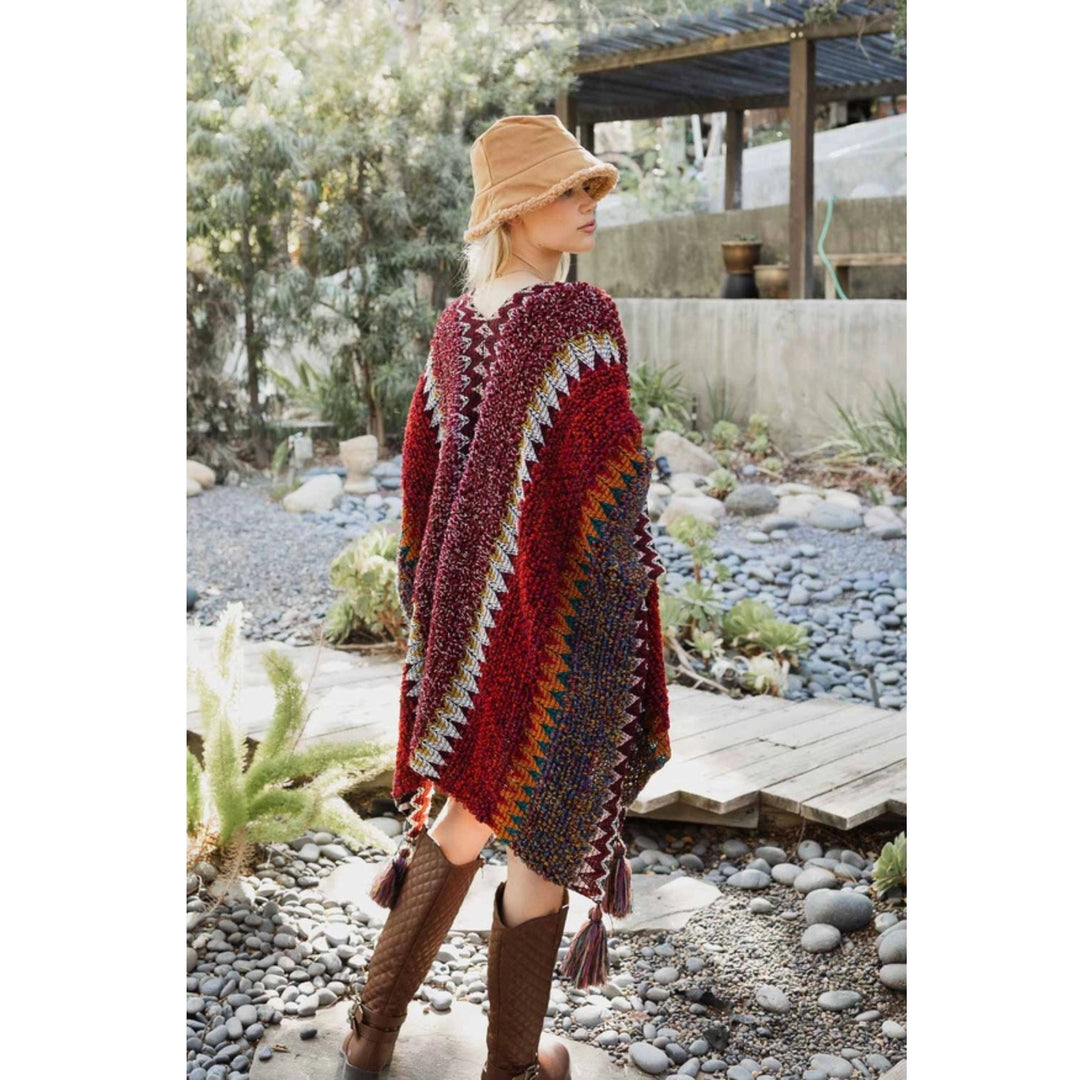With winter coming to a close and spring just over the horizon, we are swiftly approaching a holiday that many overlook but which, particularly in times such as these, should really be a lot more important. That holiday is of course, Earth Day. Celebrated every April 22nd, Earth Day is a day to put aside politics and really just think about what more we could be doing for the environment. After all, this is the only planet we have. We should probably be taking care of it.
Earth Day began in 1970 as a response to rising environmental concerns. And here, fifty-two years later, the message is the same and the concerns seemingly even more dire. But there are ways for you to do your part to minimize your footprint. Here at Darn Good Yarn, we strive to maintain eco-friendly practices and offer up materials and projects for those who have a mind to do their part in preserving the planet. And what better time to remind our friends and loyal customers than Earth Day? So here are a few family-friendly, Earth-friendly projects you can do this Earth Day to have fun and do your part.
Knitted Washcloths

It may seem small, but making your own washcloths or dish towels can not only save you money in the long run, but help to reduce your environmental footprint. Towels, like everything else, require machines to weave them, chemicals to dye them, and trucks to ship them. So cut out the middle man! Cotton yarn is all natural and can be easily found undyed. And washcloths are insanely simple to make. They’re just rectangles! Here’s a few simple patterns to try (and one slightly more advanced):
Garter Stitch Washcloth
Using cotton yarn and US size 7 needles (4.5mm), cast on 35-45 stitches (or however wide you want your washcloth to be). Knit every row until desired length. Bind off. Done! Like I said, insanely simple.
Seed Stitch Washcloth
As with the previous pattern, start by casting on your desired number of stitches onto US size 7 needles using your preferred cotton yarn, making sure your cast on number is even. Then knit as follows:
- Row 1: K1 P1 across
- Row 2: P1 K1 across
- Repeat rows 1 and 2 until desired length, then bind off. It’s that easy! Just knit the purls and purl the knits. You’ll be left with the seed stitch, which is a nice bumpy texture great for scrubbing.
And now as promised, the ever-so-slightly more advanced knit pattern:
Diagonal Garter Stitch Washcloth
This one sounds more complicated and certainly looks more complicated, but I promise, it is well within the capabilities of even a beginner:
- Using your desired cotton yarn and US size 7 (4.5mm) needles, cast on 3 stitches.
- Row 1: K1, Kfb (knit in the front and back of the stitch), K1 (4 stitches on needle)
- Row 2: Knit across
- Row 3: K1, Kfb in next two stitches, K1 (6 stitches on needle)
- Row 4: Knit across
- Row 5: K1, M1 (use whatever increase method you prefer), knit across to last stitch, M1, K1
- Row 6: Knit across
- You can see where this is going. Continue increasing one stitch on either end of the work every other row until you get the width you prefer, keeping in mind that once finished, the piece will be rotated 90 degrees to be a rectangle (you’ll be making a triangle at this point). Once you’re happy with the width, you’ll begin decreasing in a mirror of your decreases, as follows:
- Row 1: K1, K2tog, knit across until 3 st remain, K2tog, K1
- Row 2: Knit across
- Repeat, decreasing one stitch at either end until 3 stitches remain. Bind off, rotate 90 degrees, and you have yourself a fancy diagonal washcloth!
Crocheted Washcloths
For you crocheters out there, you can get in on the fun, too. Using a US size H (5mm) hook, chain your desired width. Starting in the second chain from the hook, crochet 1hdc (half double-crochet) stitch in each remaining chain. Chain two, turn your work, and repeat. Keep a close count of your stitches as it is really easy to find that you’ve gained or lost stitches out of thin air.

Note: I chose the half double-crochet because it gives you a more pliable fabric without being too holey, as crochet tends to be. If you prefer a stiffer, tighter fabric, you can change to single crochet. You can also alternate between the two to give you a more interesting texture. Simply work one row single crochet, one row half double, and repeat.
Upcycled Shopping Bags
How many of us compulsively collect plastic grocery bags? The idea is that if we throw them away, we’re contributing to more plastic in landfills, so we maintain guardianship of them for the safety of the environment. But what if I told you there were things you could use them for besides taking up space under your sink? Would you believe me if I told you that you could upcycle them into yarn? Well you can! Depending on the store you acquired them from, your end product may not be all that attractive, but the things you’d be making won’t need to be!
First thing's first, you may be wondering exactly how the heck you make yarn out of plastic bags. It’s actually a lot simpler than you might think. So before we get into project ideas, let’s talk about transforming your bags into crafting materials:
- Lay the bag out flat and smooth horizontally with the ends to either side
- Using scissors (or any nice sharp blade) slice off the very bottom seam
- Fold the bag lengthwise (bottom to top) until it is a strip about an inch or so wide
- Cut strips about an inch wide going up the length of the bag (you’ll end up with a bunch of plastic loops or rings)
- Unfold the strips and loop them together to form a chain
And there you have your yarn! Depending on the project, it may take quite a few bags to reach the length you need, but most of us have heaps of them stuffed around the house, so you probably won’t have too much trouble. Now, some project ideas!
Grocery bag
Okay, I know what you’re thinking. “Did I really just use 150 grocery bags to make...a grocery bag?” Yes, you did. But, hear me out. A single plastic bag is flimsy, thin, and good only for a few uses before it begins to shred. But a bag crocheted using plastic bag yarn will be tough, durable, and last you a good long while. Think of it like an upgrade!
Rug
I can hear the eye rolls now. No, I’m not suggesting a grocery bag area rug to pair with your love seat and end tables. What I am suggesting is something like a rug you keep in your mudroom or right inside your front door to put your dirty outside shoes on. Or a mat to set your kitty litter box on. Or maybe a rug to carry around with you to kneel on whilst you garden. And the best part, it’s plastic, so if you want to wash it, just take it outside and hose it down. Easy peasy!
Basket
Lastly, a simple and useful project you can make using your grocery bag yarn, a basket. Basically just a bowl with hand grips, a basket can be made any size you want. Want something small to hold your fruit on the counter? Go for it. Want something a little bigger to hold balls of yarn and that scarf you keep swearing you’ll finish one day? Do it. Something big enough to haul your laundry? Ambitious. I love it!
Basically, your grocery bag yarn is excellent for projects that prioritize utility over aesthetics. If you don’t mind Kroger brown or Dollar General yellow, grocery bags are an economical and environmentally friendly option.

Hand-spinning & Dyeing Yarn
Hand-spinning and dyeing your own yarn is a fantastic way of minimizing your environmental footprint. Not only does it remove the factory processing factor, but it allows you to know exactly what has gone into your yarn from the materials used to the ingredients of the dye. And on top of that, you get the intense satisfaction that comes from knowing an item you made was made entirely by you from start to finish, from raw wool to ugly Christmas sweater.
For obvious reasons, this is not a novice project. But it’s also not particularly advanced. Like anything else, there’s a learning curve. You will be terrible when you start learning to spin. Just like you were terrible when you first picked up a crochet hook or a pair of knitting needles. Like knitting or crochet, spinning is just a new skill to learn and should be approached as such. I am personally not a spinner myself, but there are oodles of fantastic tutorials online for the various forms of spinning you can try. And once you get into it, you’ll find just how creative you can be as you level up your spinning skills. You can change up fiber blends, textures, materials, colors, and plies. You’ll never run out of creative combinations for your yarn creations.
Here are some dyeable yarns:
Knitted/Crocheted Grocery Bags
More and more people these days are using reusable grocery bags, which is fantastic. But have you ever seen those things? They’re usually ugly and mass produced and probably don’t off-set their environmental impact all that much. So why not make your own? The fantastic thing about making your own is that you can make them however you want. Want to crochet a net-style bag for larger items or fruits and veggies? Want a sturdier, more solid felted bag to carry heavy or cold items? Do you want to make a grocery bag with an elaborate Celtic knot design? You can do any and all of those things. Big, small, wool, cotton, whatever you want. And knitted or crocheted items are far more durable than most of the flimsy reusable bags you find at the checkstand. How eco-friendly is it to have to buy new reusable bags every few months? Not very!
These are just a handful of projects you and your family can partake in to honor Earth Day this year. Whether you’re new to yarn-crafting or an old pro, there’s something for everyone who wants to do their part in minimizing their ecological footprint.
 Rewards
Rewards




